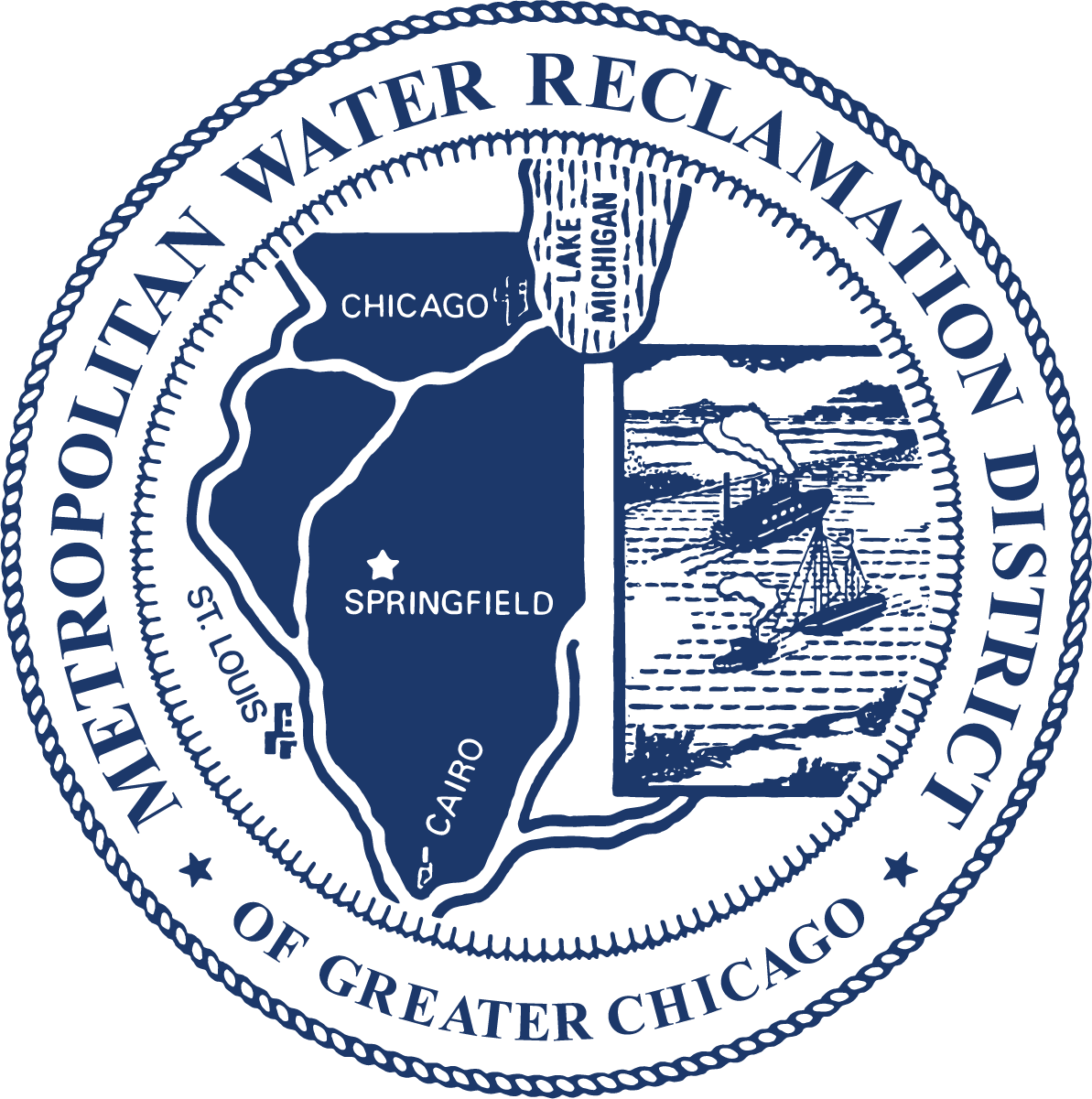Robbins Heritage Park and Midlothian Creek Restoration Project
The MWRD is working with the village of Robbins to help reduce flooding, restore Midlothian Creek, and create recreational and economic development opportunities to strengthen and revitalize the community. The Robbins Heritage Park and Midlothian Creek Restoration Project will help address overbank flooding through a new stormwater park and pond, along with improvements to Midlothian Creek and an overflow channel that connects to the Cal-Sag Channel. Joined by project partners, the MWRD and Robbins officials marked the completion of the first phase of work on the project on Oct. 31, 2024. Read more.

A history of flooding
Midlothian Creek is a tributary within the Little Calumet River watershed. A large part of Robbins is within the floodplain of Midlothian Creek on top of historical wetlands. The flat terrain, combined with a lack of stormwater infrastructure, has led to frequent flooding and waterway pollution. The banks of the creek have eroded and are overgrown with invasive plants.

Adopting a community-wide vision that could extend beyond stormwater
The more stormwater management solutions we identified, the more impacts we realized we could make on a broader scale to benefit Robbins. Our work garnered a Chicago Community Trust grant that allowed engineers and planners from the MWRD and the University of Illinois at Chicago (UIC) College of Urban Planning and Public Affairs to hold a series of public meetings and workshops with Robbins residents to envision how the Robbins park could provide recreation and a critical tool to combat flooding. Possibilities began to multiply.

Abundance of support
The Chicago Metropolitan Agency for Planning (CMAP) also selected Robbins as one of 34 projects to receive planning support through the agency’s Local Technical Assistance (LTA) program to assist the community through increased livability, sustainability and economic vitality. Partnering with the MWRD, the Regional Transportation Authority (RTA) and the village of Robbins, CMAP chose the Robbins project to implement a plan that addresses better stormwater management, increased economic development, and improved quality of life for residents, businesses and visitors. The Robbins Master Plan, developed by Donohue & Associates and Skidmore, Owings & Merrill, received the Illinois Chapter of the American Planning Association’s Strategic Plan Award in 2017.
A two-phase approach to addressing flooding in Robbins
Diversion channel construction
Completed in two phases, the stormwater improvements extend along Midlothian Creek and east of Kedzie Avenue from around 139th Street on the south to the Cal-Sag Channel on the north. The first phase of the project involved the establishment of a diversion channel. We then constructed a culvert under 135th Street, where the diversion channel will connect to a stormwater pond. Three drop structures will control flow from the stormwater pond to the diversion channel and Cal-Sag Channel. Stone armoring was also installed along the diversion channel waterline.
Midlothian Creek restoration and stormwater park and pond
After the construction of the diversion channel, a second phase of work will begin on a stormwater park and pond and conveyance improvements along Midlothian Creek. The MWRD will stabilize 1,990 linear feet of streambank along Midlothian Creek, controlling erosion by cutting back both banks and providing a stable slope with native plants appropriate to the moisture and soil conditions. The flood-control pond has 28.5-acre feet of storage capacity at the 100-year flood elevation and will be constructed east of Kedzie between 135th and 137th streets and north of Midlothian Creek. The Robbins Heritage Park will include a naturalized wetland detention area and channel improvements to resemble a park-like setting in central Robbins.

Rain garden and green infrastructure
Bioswales will be planted along Spaulding and Sawyer Avenues from 137th to 139th streets, capturing stormwater runoff. A 13,907 sq. ft. rain garden will also be installed in the 138th Street right-of-way between Sawyer and Kedzie avenues to absorb more runoff from the bioswales and surrounding area before discharging into Midlothian Creek. Midlothian Creek will have a reduced annual pollutant loading of approximately 182 tons of sediment, 4,314 lbs. of suspended solids, 33 pounds of nitrogen and 5 pounds of phosphorus. This is due to the rain garden, the streambank stabilization, and the riparian buffer.

New levels of protection from flooding
The Robbins Heritage Park and Midlothian Creek restoration will increase the existing stormwater drainage system. It currently offers protection for less than a 5-year storm event, but the project will increase that protection to a 100-year-rain event level of service. As a result, the project will remove approximately 140 acres from the floodplain, protect 92 structures and remove more than 1,300 parcels from the 100-year floodplain. The project will also increase awareness for the watershed, provide critical drainage for an area with no existing stormwater infrastructure, promote green infrastructure and maintenance, improve local water quality and attract further housing, transportation, recreation and economic development opportunities.
Project partners
The estimated construction cost of the two phases is $30 million. It is being paid for by the MWRD with support from Cook County via Community Development Block Grant-Disaster Recovery funds, the Illinois Environmental Protection Agency (IEPA) and the National Fish and Wildlife Foundation’s Chi-Cal Rivers Fund. We broke ground with the village of Robbins in August 2022 and plan to complete these important projects by 2025.



